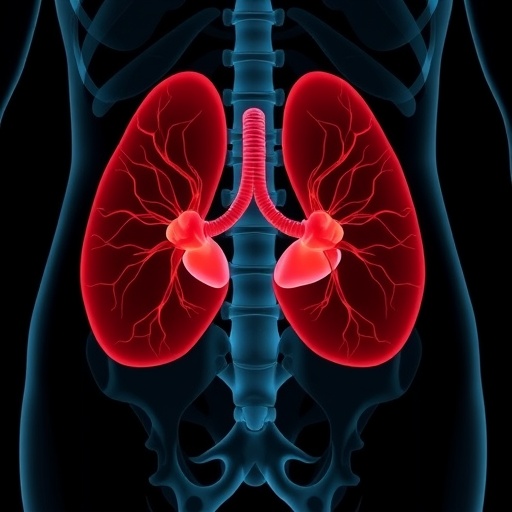
In the high-stakes realm of neonatal care, every second can mark the difference between life and death. The latest study by Desai, George, McDonald, and their colleagues, published in the Journal of Perinatology in 2025, delves into the intricate process of urgent neonatal retrievals and offers a pioneering look at how critical team mobilization times can be drastically shortened. Through a dedicated Quality Improvement Initiative, this research unpacks the systemic and procedural delays in neonatal critical care retrievals and outlines actionable strategies to enhance the speed and efficiency of team launches during these urgent interventions.
Neonatal retrievals—the urgent transport of critically ill newborns from peripheral hospitals to specialized intensive care units—are universally recognized as vital but logistically complex medical operations. The challenge lies not only in rapid stabilization and transport but also in efficient preparation and deployment of specialized retrieval teams. These teams encompass neonatologists, specialized nurses, and paramedics who must synchronize quickly in response to emergent referrals. The study ventures beyond theoretical improvement, instead implementing a structured quality improvement framework over multiple phases and meticulously tracking its influence on team mobilization time intervals.
The researchers embarked on this initiative against a backdrop of growing demand for neonatal retrievals, driven by an increasing number of high-risk births outside tertiary care centers. Within this context, they employed detailed process mapping and time-motion studies to identify bottlenecks in the launch sequence—from the initial referral call to the moment the team departs the base. The analysis revealed that delays frequently occurred due to communication inefficiencies, fragmented role assignments among team members, and logistical constraints like equipment preparation and transport arrangement.
.adsslot_zsy5Ew1AMv{width:728px !important;height:90px !important;}
@media(max-width:1199px){ .adsslot_zsy5Ew1AMv{width:468px !important;height:60px !important;}
}
@media(max-width:767px){ .adsslot_zsy5Ew1AMv{width:320px !important;height:50px !important;}
}
ADVERTISEMENT
To tackle these challenges head-on, the study introduced standardized protocols that integrated real-time communication tools, checklist-driven preparedness for neonatal transport equipment, and clarified role delineations for each team member prior to launch. Notably, the quality improvement model applied was iterative, allowing for continuous feedback cycles that refined these interventions further. This dynamic process ensured that changes were not merely theoretical but flexible enough to adapt to varying clinical situations and team compositions.
Quantitative outcomes from the study were especially compelling. The launch time—the interval between referral receipt and team departure—significantly decreased over the study period. This was coupled with consistent documentation improvements, allowing for robust validation of the time savings. These expedited mobilization times are clinically significant since they translate directly into earlier initiation of intensive care for neonates in critical condition, a factor known to mitigate morbidity and mortality in this vulnerable population.
Beyond the numerical improvements, the initiative fostered enhanced team cohesion and morale. Staff surveys conducted before and after the quality improvement measures indicated heightened confidence in preparedness and communication efficiency. This intangible benefit is crucial, as neonatal retrieval often demands high emotional resilience and precise team coordination under pressure. The study highlights how systematic interventions can positively reshape the culture around emergency neonatal care workflows.
A crucial technical insight borne from the analysis relates to communication infrastructure. Integration of a centralized coordination platform with automated alerts substantially reduced delays inherent in multiple handoffs and redundant status confirmations. The technical upgrade enabled parallel task executions; for example, while the neonatologist prepared clinical documentation, nursing staff simultaneously readied essential equipment. Such overlapping processes represent a shift from linear to parallel operational models, markedly slashing waiting times.
Moreover, the study underscores the importance of role clarity in emergency settings. Ambiguities in responsibilities can lead to either duplicated efforts or overlooked tasks. By employing a protocol that defined and rehearsed individual responsibilities within the launch workflows, team members developed an intuitive understanding of trigger points and handoffs. This cognitive clarity is a subtle yet powerful driver behind the observed performance gains.
The logistical dimension, including streamlining transport modalities and pre-positioning essential retrieval resources near anticipated referral regions, also featured prominently. While structural constraints like travel time to patient sites remain limiting factors, reducing internal team preparation and dispatch delays can recover precious minutes. These insights encourage healthcare systems to invest thoughtfully not only in training and protocols but also in infrastructure supporting rapid deployment.
The research additionally grapples with implementation science aspects, emphasizing that success hinges on multidisciplinary engagement, leadership commitment, and ongoing data-driven evaluation. The sustained improvement over the study period illustrates the value of embedding continuous quality improvement cultures in neonatal retrieval services rather than adopting one-off interventions.
Importantly, the broad applicability of this study stands out. While contextualized within a specific retrieval network, the principles of protocol standardization, communication enhancement, and parallel task management have relevance worldwide. Given the universal nature of urgent neonatal transport challenges, there is significant potential for replication, adaptation, and scaling of these quality improvement strategies across diverse healthcare systems.
The study also hints at future research directions, including integrating advanced predictive analytics for referral triage and employing artificial intelligence to optimize resource allocation in real time. Such innovations could propel neonatal retrieval efficiency even further, potentially preempting clinical deterioration by enabling preemptive team mobilization. These prospects resonate with broader trends emphasizing digital health transformations in acute care delivery.
In summary, Desai et al.’s work is a landmark contribution that transforms clinical urgency into operational excellence. By dissecting and reforming the chain of events from neonatal referral to team departure, the researchers demonstrate how evidence-based quality improvement methodologies can yield tangible gains with profound patient impact. Their findings not only reaffirm the criticality of time in neonatal retrieval but also offer a replicable blueprint for enhancing emergency medical responses in other domains.
As neonatal care continues evolving with technological advances and shifting epidemiologies, this research provides a practical and data-driven framework for systems aiming to optimize rapid response capabilities. The integration of communication technology, rigorous protocols, role delineation, and iterative feedback forms a robust foundation upon which neonatal retrieval services can build the future of lifesaving care delivery. This study marks a step change in how emergent neonatal retrievals can be operationalized, underscoring that quality improvement, meticulously applied, can rewrite the narrative of neonatal emergency response worldwide.
Subject of Research: Quicker team launch times for urgent priority neonatal retrievals through a Quality Improvement Initiative
Article Title: Quicker team launch times for urgent priority neonatal retrievals: A Quality Improvement Initiative study
Article References:
Desai, S., George, K., McDonald, K. et al. Quicker team launch times for urgent priority neonatal retrievals: A Quality Improvement Initiative study. J Perinatol (2025). https://doi.org/10.1038/s41372-025-02354-6
Image Credits: AI Generated
DOI: https://doi.org/10.1038/s41372-025-02354-6
Tags: critical care team mobilizationemergency response in healthcareenhancing team response timesneonatal intensive care unit transportneonatal retrieval process improvementneonatal transport logisticsperinatal health research advancementsquality improvement in healthcarespecialized medical team efficiencysystematic delays in neonatal careurgent medical interventionsurgent neonatal care





